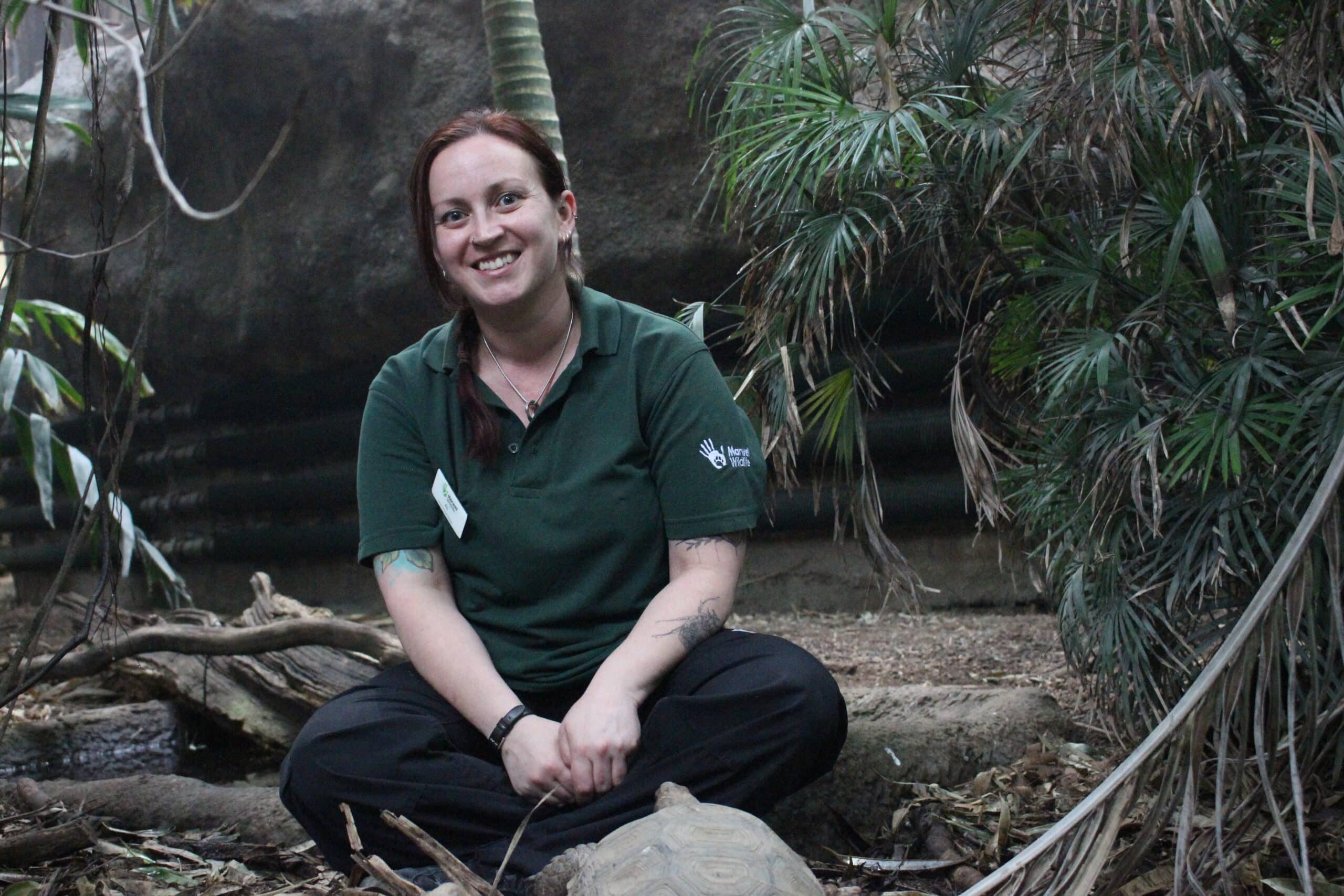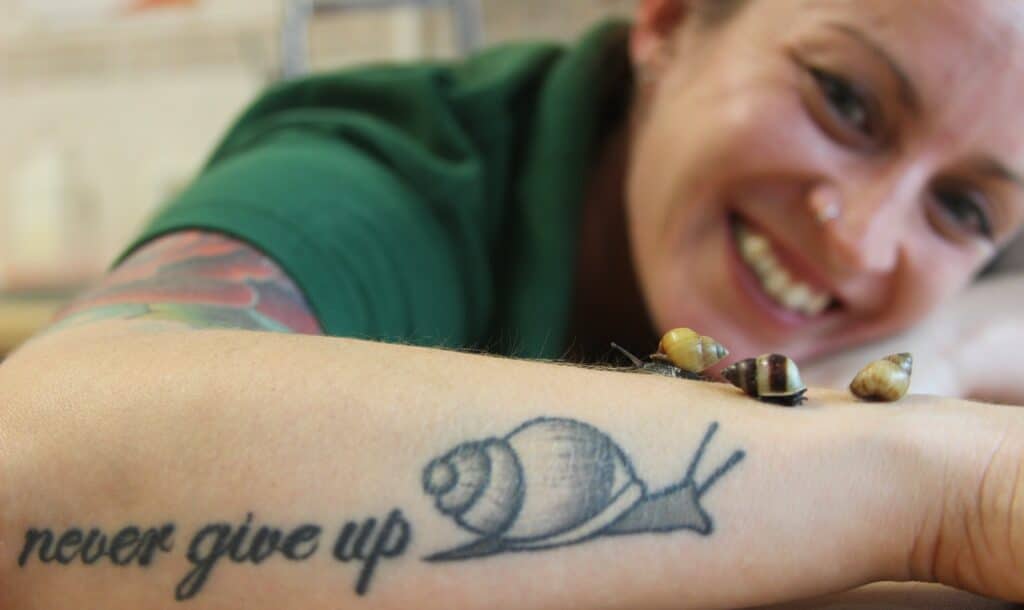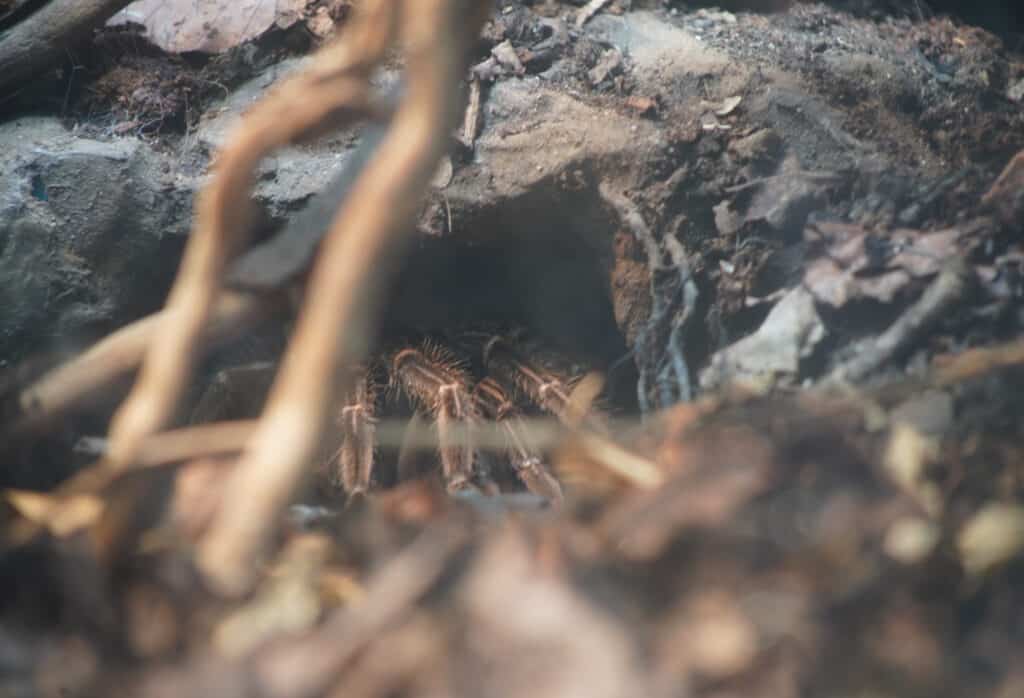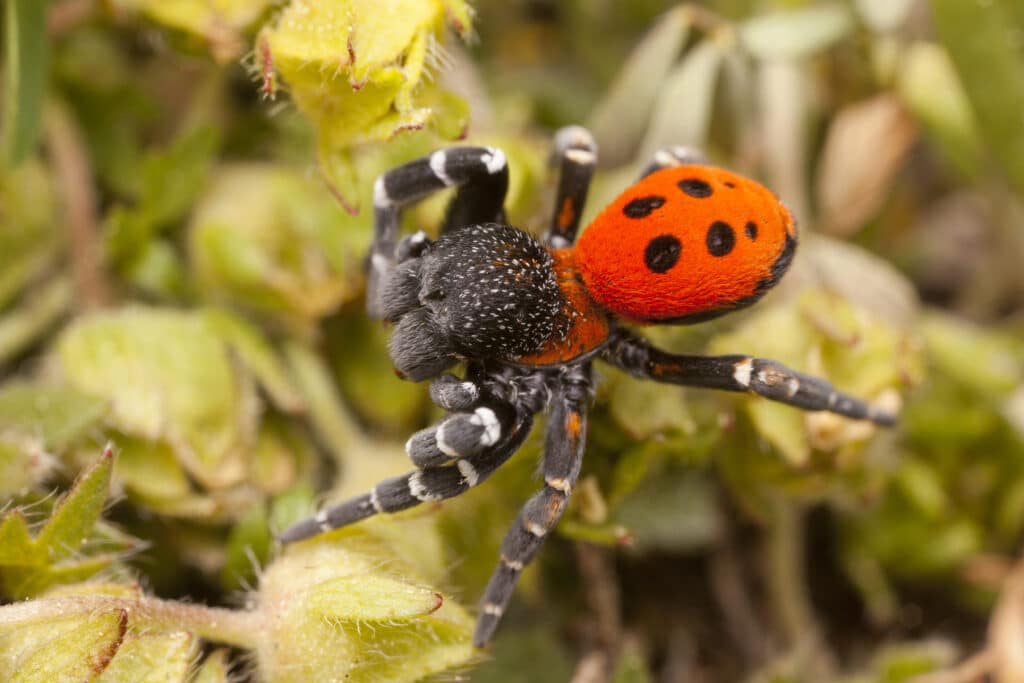From Crippling Fear to a Spider Career
March 14, 2024
March 14, 2024

Spiders are our friends!
For the first few decades of my life, I suffered with a severe fear of spiders known as arachnophobia. When I was younger, I can remember my family members being scared of them, so I think it developed from that – as with most people.
I just couldn’t stand anything about them; how they looked, how they moved and worst of all, their ability to appear as if from nowhere. Spiders are found on every continent, except for Antarctica, in all manner of habitats – even underwater so avoiding them completely is never going to be an option.

That being said, my passion for all other animals led me to start working at Marwell Wildlife in the Conservation Team as an intern. Fast forward a few years and I moved on to the Lower Vertebrates and Invertebrates Team, where we had several different spiders at the time, including a goliath bird eater (Theraphosa stirmi) and black widows (Latrodectus mactans).
Those first few months were absolutely terrifying, but as I spent more time with the spiders and learned more about them, my fear turned into fascination, which then developed into a love of all things arachnid.
So, you may be asking – What’s so special about spiders? Well, they’re fascinating and once you get over that initial fear you may (or may not) have you’ll understand how amazing they are too.
Did you know? Spiders mainly eat invertebrates and thus keep population levels down, meaning fewer crop pests and fewer biting insects. They play a vital role in balancing ecosystems. This means keeping everything in nature in the right proportions so that each part can thrive.
Most spiders prefer to avoid contact with people, any conflict arises because we are encroaching on their habitats and territories.


Fun spider facts:
22 years later, I’m still at Marwell and I’ve been working in the Lower Invertebrates section for 12 years. The next time you see one of our eight-legged friends, please take a moment to appreciate them and think about what our lives would be like without them.
If you see them in your house, simply leave them alone or pop them outside – remember, spiders are our friends!
Ali Reynolds, Senior Animal Keeper, Animal Care Team